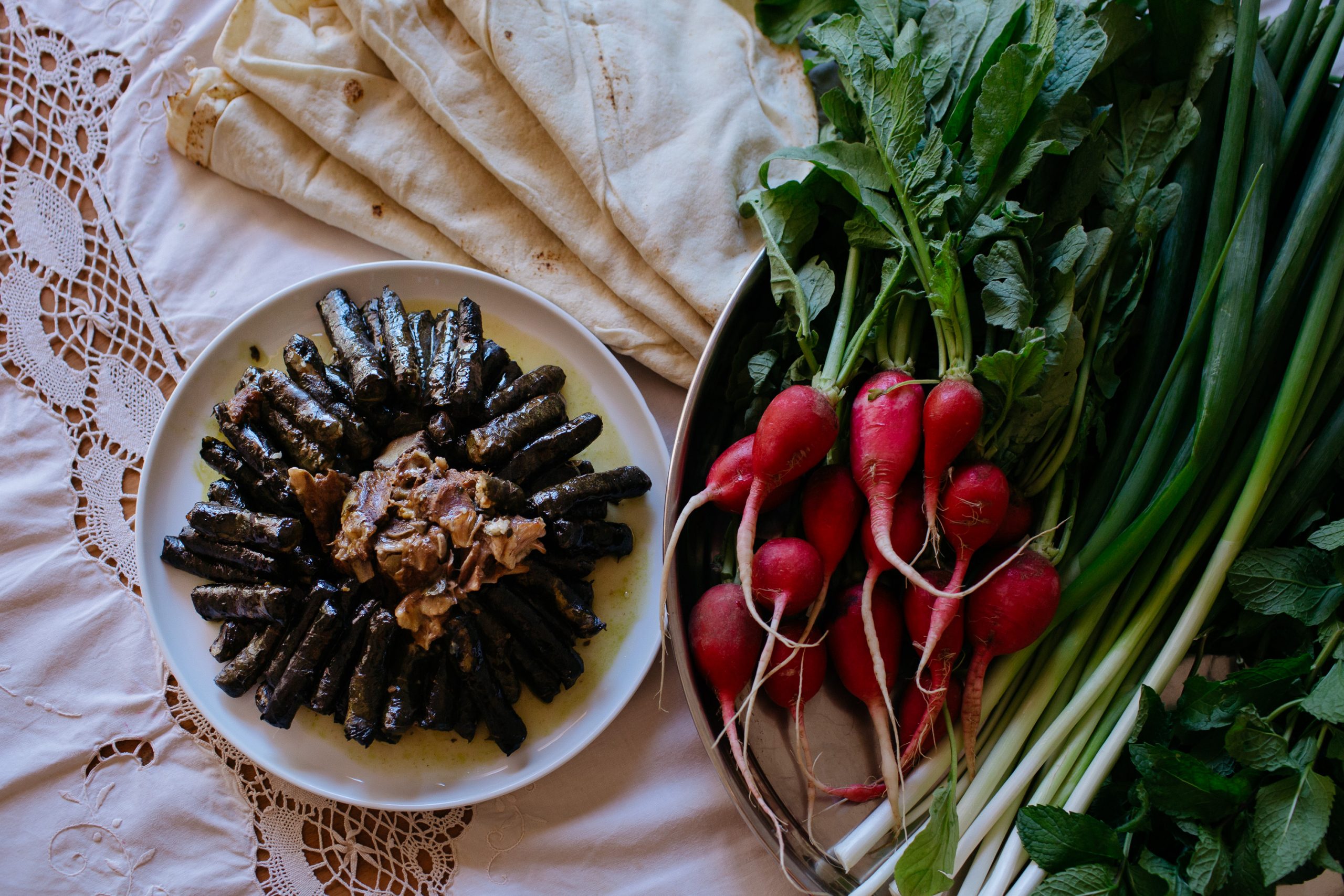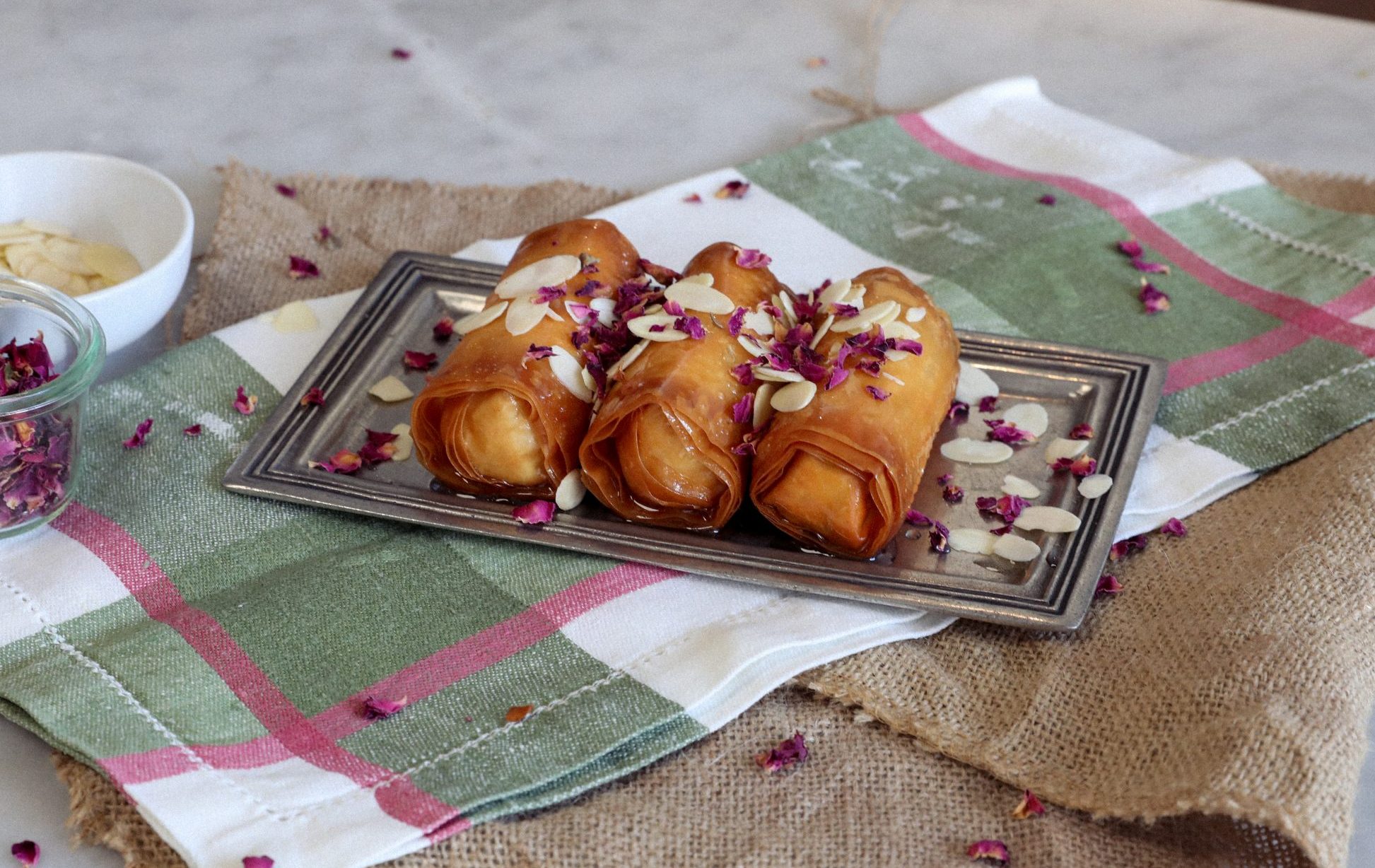Jahida’s Malfouf
 Lebanon
Lebanon 
I’m a 90s kid and was born in Sydney, Australia’s biggest and probably busiest city. Both my parents are Lebanese and part of the Lebanese diaspora.
My father was born in Lebanon. His family are from a village called Al Ayoun which is predominantly Muslim. My mum’s family are from Rahbeh, which is predominantly Orthodox Maronite Christian but she was born in Liberia where her parents were working.
Dad lost both his parents when he was 16 and was brought up by his brothers, and for a while lived with one of them in the United States. Mum was sent to boarding school in Lebanon then to College in America where she became a bank manager. She has more memories of living with aunties in America and Lebanon than with her parents who stayed in Africa to support their children’s education. Mum and Dad met in America. How they ended up in Australia is quite romantic.
They met through Dad’s brother Eddie. Dad was actually engaged to Mum’s best friend, however that relationship didn’t succeed and fortunately for me, following the end of that relationship, Mum and Dad ended up falling in love. Mum says Dad was overly confident. She says he was a joker who stayed persistent! When my dad proposed, my grandmother rejected his proposal, concerned about a mixed-faith marriage. My grandfather gave his blessing and so they eloped. Dad came to Australia to live with another brother so my parents actually lived with one of my aunts and uncles for a while. They married once Mum arrived in Australia. Mum had been surrounded by Muslims in America and when Sheikh Taj (the Grand Mufti of Australia at the time) was helping them prepare for marriage, she decided she wanted to convert – or revert as we call it. Dad hadn’t expected her to but she felt it would be easier to raise a family with one religion and was convinced by Islam. At her Catholic boarding school, she was friends with two girls who were secretly Muslim and when it was Ramadan, Mum would steal bread for them so they had something to eat when it was time to break their fast. Mum is a very compassionate, soft person and actually her parents later converted to Islam too.
As a family, we travel a lot but for as long as I can remember it’s been too risky to travel to Lebanon so I’ve never been and don’t have the attachment. Mum went when her mother was sick but Dad’s not a traveller: He left Lebanon 32 years ago and he’s never returned.
My upbringing was quite traditional and as the eldest of five (three boys and two girls), I grew up with many household responsibilities. From a very young age I loved watching mum cook and would be by her side peeling then crushing the garlic and dicing the onions – two jobs I always used to dread. Peeling garlic took forever and my fingers would stink and there was no stopping the tears from the onion.
On Saturdays, our house would echo with the sound of Fairuz and Abdel Halim, famous Arab singers who my parents loved, and my father took over the kitchen, cooking the usual foul (wonderfully, lemony, garlicky beans) and eggs for breakfast. I used to look forward to Saturdays so much! I loved seeing my father in the kitchen passionately cooking for the family – even though it invariably annoyed my mum as he never failed to turn the kitchen into a big mess! Every Saturday morning I’d help; chopping tomatoes and cucumber, crushing the garlic (of course), washing the mint, dicing onions and setting the table. The whole family would sit around the table and that was our time to eat and enjoy whatever story my father was going to share with us for brunch. He’s still known as a joker and entertainer.
I began to take on the role of cooking for my siblings and parents when I was a teenager. Mum never enjoyed cooking so I was glad to take it on and give her some relief. She didn’t grow up watching her mum cook and never tastes her food while cooking. Dad couldn’t understand it: “What’s wrong with you? Who doesn’t taste the food they cook?” I constantly taste food while cooking.
Food always brought the family together and it still does. Being the eldest, I find it my duty to host at least once a month to ensure the family comes together amidst the busy lifestyle we all have. Conversations at the dinner table are different and special. With a growing family of eight grandchildren it can get quite chaotic but we love it!
When I think of Ramadan, I think of many heart-warming things. It’s a time of spirituality and connection, not only with our creator but also with our loved ones. The reward in feeding after fasting gives even more encouragement to invite guests over for iftar.
But what reminds our family of Ramadan through the other months of the year is the smell of fried garlic on the stove. It gives us Ramadan vibes! Macaroni Bi Laban – pasta with a garlicky, minty, yogurt sauce sometimes topped with spiced meat, fried garlic and nuts – is a real comfort-food in most Arab countries and it was a daily requirement on our iftar table.
My husband is Pakistani and we both love that we get to enjoy a variety of dishes. I cook a range of Arab, Italian, Thai and Australian foods but don’t really cook many Pakistani dishes – I leave that to my mother-in-law who makes amazing curries and Biryani. Since eating a lot of Pakistani food, I have come to think that most Arab dishes are relatively bland or basic in flavour so I’ve started to alter the Lebanese dishes I cook by adding a range of spices, herbs and stock to give them a nice punch. My father loudly announces at every Ramadan Feast which I host at my place that my cooking is Number 1 which makes me proud, but at the same time I do shrink in embarrassment hoping he hasn’t just offended all the other female family members at the table! Lol.
The dish I have chosen to share is called Malfouf: stuffed cabbage leaves, slow cooked with lamb in a delicious, tangy, pomegranate sauce. My family loves anything ‘mahsi’, which means ‘stuffed’ in Arabic and anything stuffed was always a real family treat, not just for Ramadan or Eid but for any special family occasion or celebration. It’s a dish I associate with my mother – although I chose it in part because I wasn’t a fan of it growing up and it’s one of the recipes I have adapted! To be honest none of us really liked stuffed cabbage – we preferred vine leaves which we had for really special occasions, or other stuffed vegetables like zucchini which we had once a month or so. The cabbage was often under-cooked and tough, sometimes the stalk wasn’t cut out properly and the dish was bland in flavour.
But a few years ago when mum was overseas, I decided to cook it for my husband and siblings. I experimented and added many ingredients that go against the traditional recipe and after tasting it and listening to everyone’s feedback, complimenting me on how amazing it tasted, it became one of my specially requested dishes.
In the past, telling my family we’re having stuffed cabbage leaves wouldn’t excite anyone, but with this recipe, when you know cabbage leaves are being served everyone’s face lights up. I also always make really big quantities so we can eat for the next two to three days – it tastes even better with re-heating.
Adapting traditional recipes may be a kind of second-generation intercultural cooking thing, refiguring who we are, our food and our identities. My mother was perhaps less adventurous because familiar traditions are a comforting reminder of the past, whereas I see our generation celebrating tradition with a new twist, like much of the fusion cooking that happens in Australia.
I have only adapted the stuffed cabbage recipe. I would never change the traditional recipe for stuffed vine leaves. It’s perfect as it is and there is no reason to change it. My experiment with pomegranate dressing, pine nuts and split almonds would never work with vine leaves. Vine leaves have a rich taste of their own but cabbage needs a lot of dressing up.
My generation wants what we do to look good and taste good, especially if something is going to take us a while to prepare. We’re also a time poor generation that wants things to be quick, but I would never invite anyone over and serve vine leaves or cabbage leaves out of a pressure cooker.
What makes this dish special is the slow cooking. You can’t go to the trouble of making the rolls if you don’t give them the benefit of slow cooking for a very long time so it’s one of those dishes you can’t surprise anyone with! When we were kids, we used to smell it cooking on the stove overnight and we’d always say, “Mum we can’t wait to eat this!”
Nowadays you can buy rolled vine leaves in the freezer sections of most Arab grocers and many butchers for about $20-25 a kilo. Some people use them. I haven’t seen stuffed cabbage leaves but the preparing of the rolls is such a special experience that you’d be missing out if you bought them ready-made. The joy of food isn’t just in the eating!
This year, I stuffed my cabbage leaves for Eid celebrations with my mum and my sister-in-law. It’s a big task so not something you would want to do on your own if you’re feeding a big family. It’s a great time for bonding and laughing and we often do it at night when the children are in bed. After a year of Covid restrictions, it would also be a great team-building exercise for teams that haven’t been together for a while.
There are many variations of stuffed cabbage depending on the region but my recipe below is based on the recipe passed down from my Lebanese parents. It may seem overwhelming but there are many YouTube videos with great tutorials on how to boil the cabbage leaves and roll them. Challenge is good – and the rest is easy peasy!
If you try this recipe, please do share with me. You can find me on FB and Instagram @Jahida_Elassaad. And don’t forget to tag @recipesforramadan too.
Ramadan Mubarak – and Sahtan! (Double health – enjoy and eat in good health – a bit like saying Bon Appetit!).
Jahida El-Assaad
May 2021
Share this story
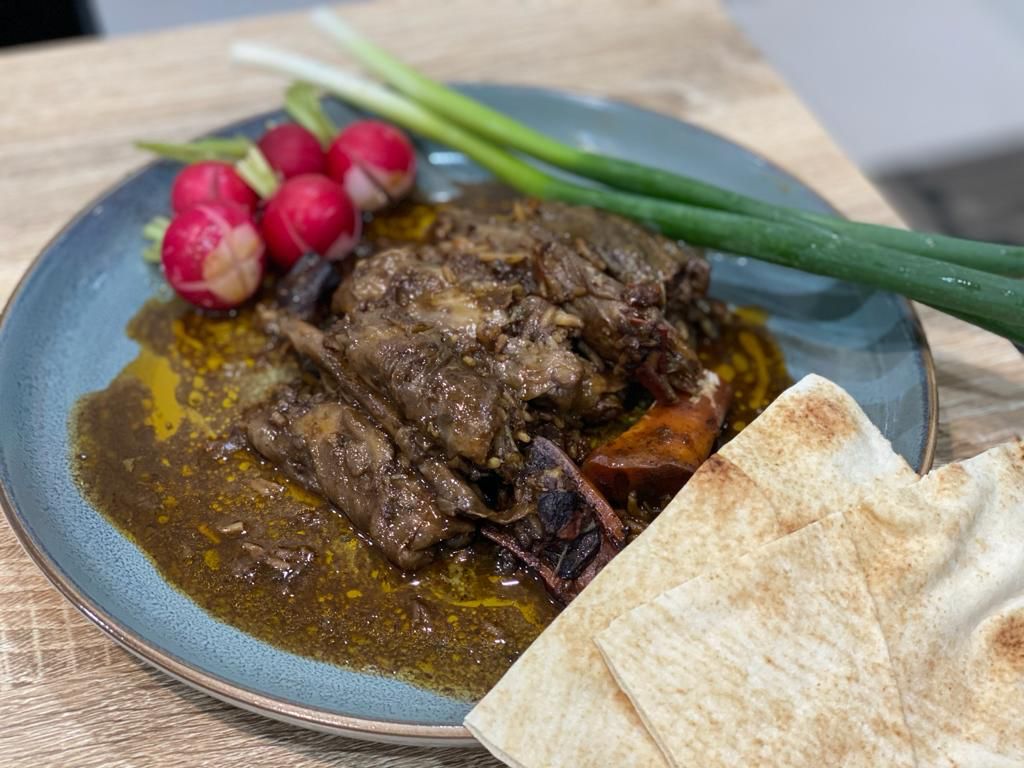
Prepare Cabbage Leaves
- Bring a large pot of water, with a teaspoon of cumin and salt to a boil.
- Cut the core from the cabbage and place the cabbage in the boiling water for 5 minutes.
- As the leaves loosen, you can place a fork in the core of the cabbage to hold it steady and use another fork or knife to gently separate the outer leaves away from the core one at a time. The leaves just need to be soft enough to be pliable without being too soft. The inner leaves may need to sit in the water for an extra few minutes if they are not soft enough. Place the ready to use cabbage leaves in a colander.
- Prep the leaves by cutting the stem out, leaving two pieces of the leaf or if it’s a larger cabbage cut the leaf into workable sizes about the size of a man’s palm. Stack the cabbage leaves on a plate and set them aside. Keep the smallest leaves or tough ones to line the bottom of the pot for cooking.
Prepare Stuffing (Hashweh in Arabic)
- Wash and soak your rice for 20 minutes.
- To make the stuffing, add the mince, a teaspoon of salt, a teaspoon of black pepper, a teaspoon of cumin and 7 spices, a teaspoon of crushed garlic and the soaked rice to a bowl and mix well until everything is incorporated.
- Heat a small skillet with 2 tablespoons of ghee and fry the slivered almonds, once browned remove the almonds from the skillet and add to the bowl with the hashweh.
- Use the same ghee to cook the pine nuts. Once the pine nuts have slightly browned, add the ghee and pine nuts to the hashweh and mix in well.
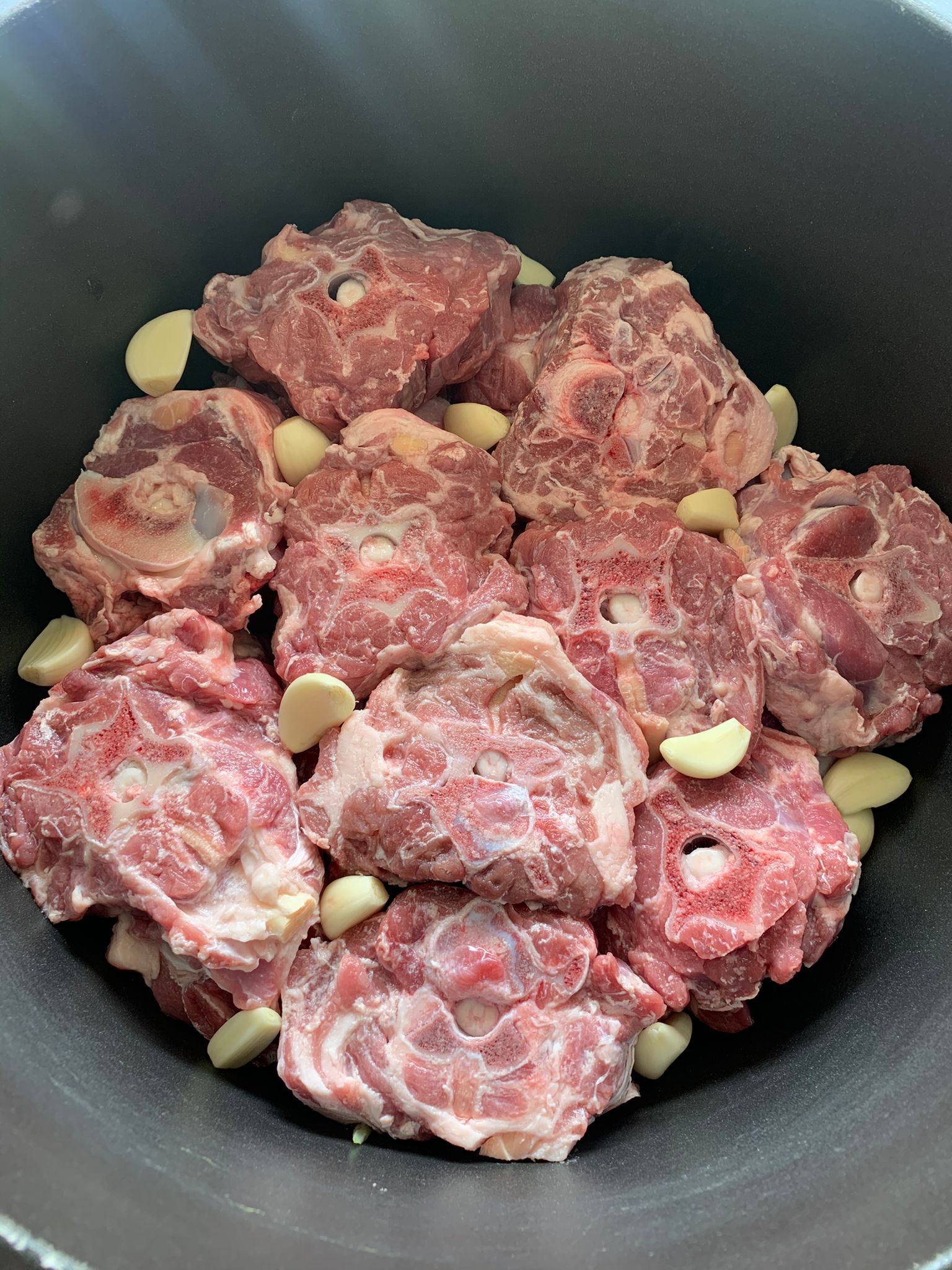 Stuff, Wrap and Cook
Stuff, Wrap and Cook
- To stuff and roll the cabbage leaves, lay a cabbage leaf flat on a chopping board, scoop some of the rice mixture into the centre of the cabbage leaf, and carefully roll it slowly and tightly, but without tucking in the corners. Squeeze the cabbage roll to help secure it and set aside on a tray. Repeat until all the cabbage leaves have been used.
- Line the bottom of a large pot with the small cabbage stems.
- Place the lamb in flat layers above each other. Scatter the 15 cloves of peeled garlic on top of the lamb.
- Neatly arrange the stuffed cabbage in rows on top of the lamb to completely cover the circumference of the pot, laying alternating rows in opposite directions.
- In a medium sized pot on the side, add ghee, the rest of the crushed garlic and the dried mint. Fry for a minute or two and then add the teaspoon of tomato paste, cumin and 7 spices. Cook the tomato paste through and then add the pomegranate molasses. Once the sauce starts to boil, add 1 litre of the beef stock and 1 tablespoon of corn flour. Mix through and turn off the heat.
- Pour the sauce slowly from the medium sized pot on top of the cabbage leaves and lamb. The sauce should be enough to cover the cabbage leaves, if not, use the second carton of beef stock to pour on top, enough to cover the cabbage leaves.
- Place a small round plate on top of the cabbage in the pot to hold them down and prevent them from floating while they are cooking. Place a heavy pot filled with water on top of the plate to hold them down in place.
- Cook on medium heat for 30 minutes. Then cook on low heat for an additional 5.5 hours. Remove the weight plate in the last 30 minutes and taste the broth, adding salt or more pomegranate molasses if needed.
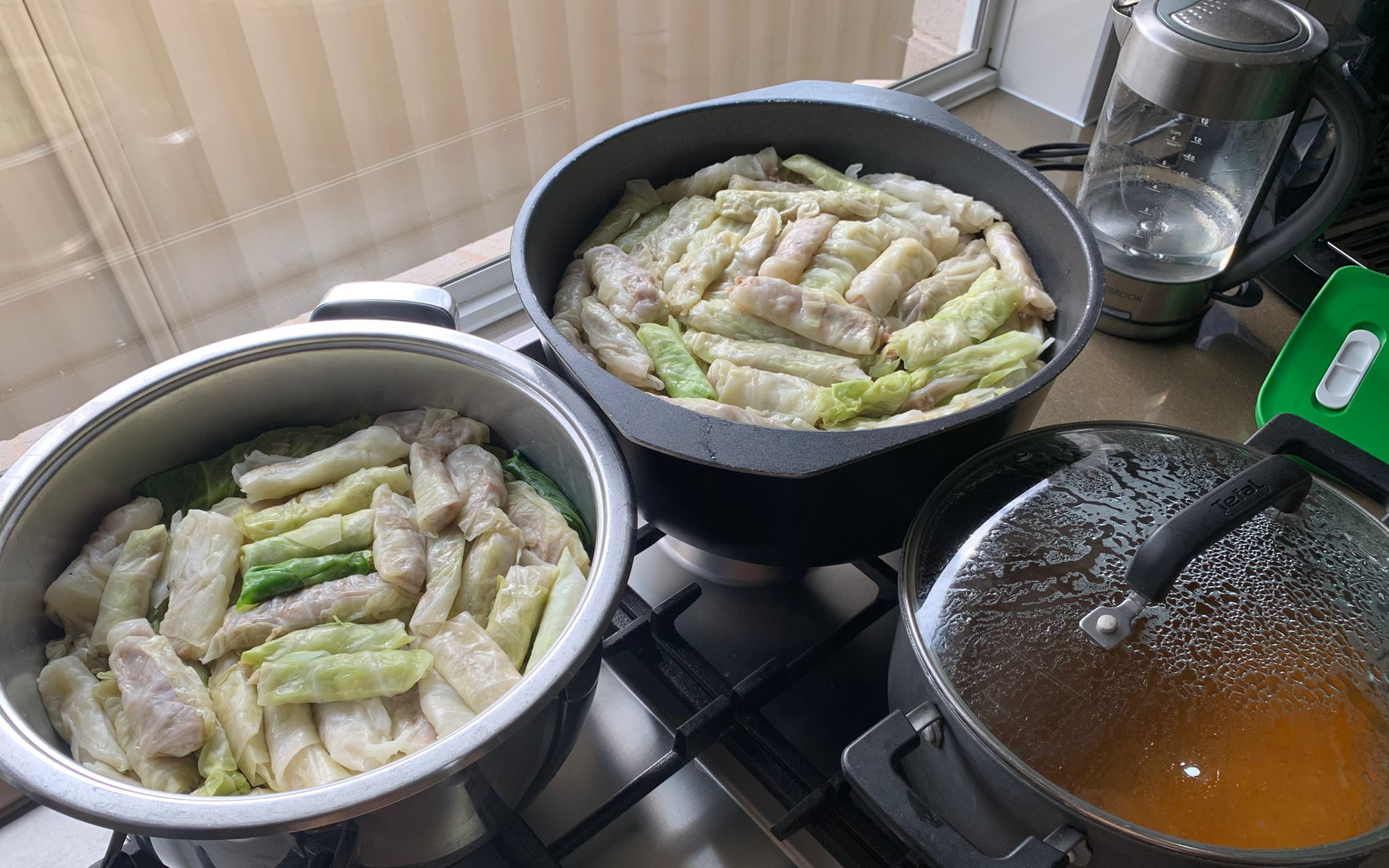
Notes
Serve with bread, Fattoush, radish and spring onions.
Storage: Store any leftovers in an airtight container. They will last about 3-4 days in the fridge.
Make Ahead Tips: You can make the hashweh stuffing up to 2 days in advance. You can also prepare the cabbage in advance and store in the fridge.
Equipment: Slow cooking for 6 hours gives the dish a more dense and delicious taste but if you want to use a pressure cooker, pack the lamb and cabbage rolls in the pressure cooker, add the stock, close and cook for 1 hour. Be sure to let them rest for 15 minutes before releasing the steam.
